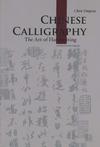中国书法
出版时间:2010-1 出版社:五洲传播出版社 作者:陈廷祐 页数:128 译者:任灵娟
内容概要
Calligraphy is the quintessence of Chinese culture. When the ancient Orientals carved the earliest abstract symbols on the walls of their cavehouses, and on animal bones and tortoise shells, their symbolic action marked the beginning of the Chinese written language and civilization. At the same time, it indicated the beginning of the splendor of Chinese calligraphy.Why has Chinese calligraphy been able to survive several thousand years? How could it become a rare art independent of its functions for writing and recording events? What kind of close relations has it developed with the aesthetic standards, value concepts and cultural spirit of the Chinese people? How can we enter into this mysterious black-and-white world?
作者简介
Chert Tingyou has graduated from Shanghai Jinan University in 1948. From 1952 to 1974, he worked as an editor and reporter of Peoples China and Beijing Review. Later, he worked as an executive editor at the Commercial Press. He is a member of the Chinese Calligraphers" Association and a member of the All-China Association of Esthetics. His works include The Beauty of Calligraphy, the Esthetics of Chinese Calligraphy, A New Study of the Esthetics of Calligraphy, and The Origin and Creation of the Esthetics of Calligraphy.
书籍目录
Foreword: A Cultural Treasure of ChinaChinese CharactersFour Treasures of the StudyBeauty of CalligraphyCreativity of Calligraphy ArtCalligraphy and Chinese CultureCalligraphy MastersRenascence of CalligraphyAppendix: Chronological Table of the Chinese Dynasties
章节摘录
Characters and writing are two essential elements of calligraphy. If characters are the body of calligraphy, writing is the soul. They form the art of calligraphy. Calligraphic characters are quite different from those written purely for decoration and the characters of the "Ge Typeface" used by the officials of the Imperial Academy. Also, they are different from those which appear in ancient or modern books. The lines and individual characters which appear in calligraphic works are vigorous, and full of feeling and thought. Also, they demonstrate a moving, progressive and rhythmical beauty. Now we will discuss three structural forms of calligraphy. They are strokes, characters and lines, which join together to reflect the beauty of the calligraphy. Among these three, strokes are the foundation, because all the characters and lines are composed of strokes. The characters and lines are the tracks of movements or arrangement forms of the dots and strokes. Vigor, shifting, rhythm, change and harmony are key elements of the beauty of the dots and strokes, and are also the key elements of the beauty of the characters and lines. Certainly, these key elements show different proportions in the strokes, characters and lines.
图书封面
评论、评分、阅读与下载
用户评论 (总计5条)
- 了解中国书法文化的英语表达的参考书。
- 很棒的中国书法英文手册。
- 还可以,翻译与印刷都不不错!只是内容不多,价钱偏高!
- 印刷清晰,开本太小,有点失望!
- 就是冲着学习英语去的,但是拿到手感觉有点失望,就是有点薄,180页,23cm*16cm,还没有仔细看,价格再便宜点就好了
